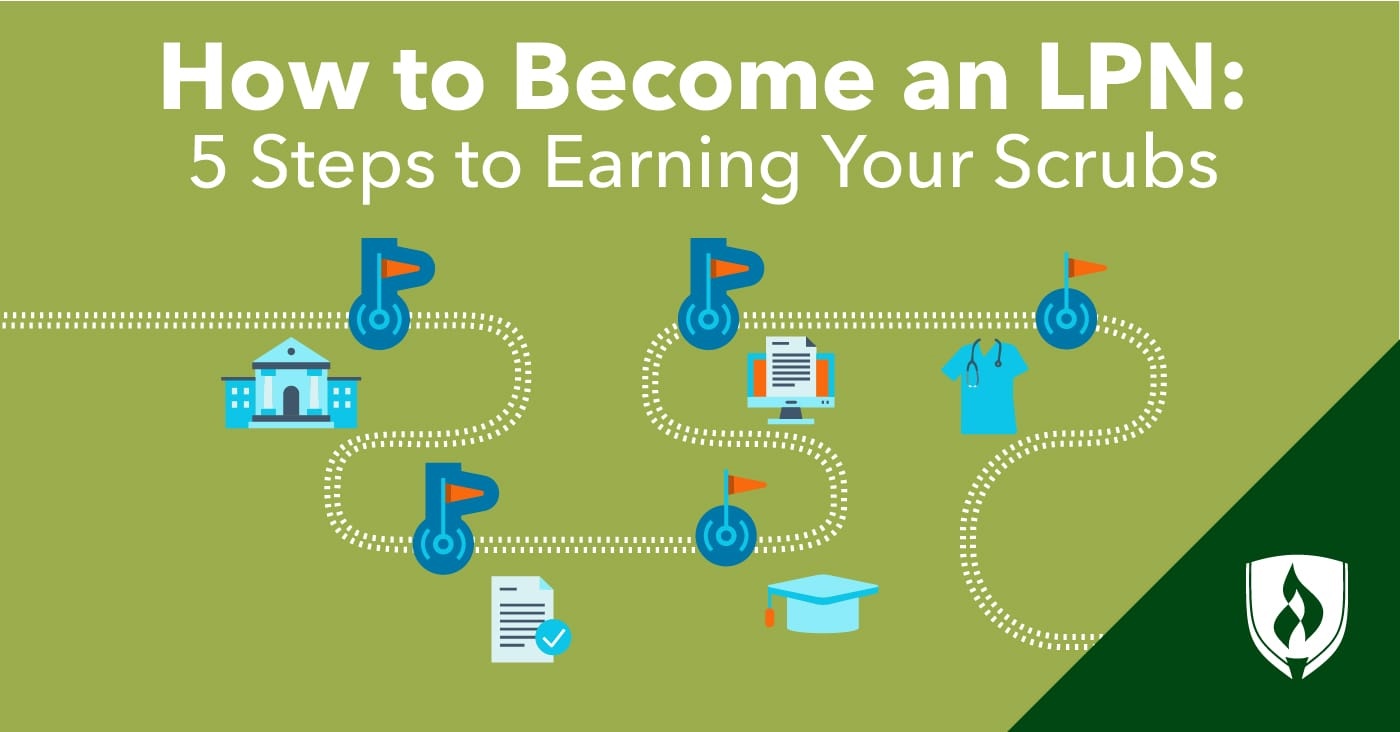
You’ve always known that you like to care for people. Whether it is for a child, an aging parent or a heartbroken friend, you seem to have extra reserves of compassion when someone needs your help. Many people consider the medical field for that very reason but don’t have the time to invest in years of schooling. If that sounds like you, keep reading!
There are plenty of healthcare career options for individuals spanning all education levels. One of the most attractive options is becoming a licensed practical nurse (LPN). LPN jobs are projected to increase by 11 percent through 2028—a rate that is faster than the 5 percent national average for all occupations, according to the Bureau of Labor Statistics (BLS).1
But how long does it take to become an LPN? The exact timing for studying, applying and earning licensure is flexible, but you can earn a Practical Nursing diploma in as few as 12 months.2
Do we have your attention yet? Before you get too far ahead of yourself, let’s take a look at how to become an LPN. Read on for a quick breakdown of the steps you can expect to take on the path to a new career.
Get Your Nursing School Questions Answered at a Nursing Information Session
Step 1: Choose a nursing school
It should come as no surprise that the first step is to research your school options. There are thousands of nursing schools across the country. Before you commit to investing so much time and money into a program, it’s important to be confident that it will meet your needs.
It might be helpful to make a list of the factors that are most important to you before you dive headfirst into the sea of schools out there. Some factors to consider: Is there a campus nearby? When is the nearest start date? Does the course schedule fit your life? It’s also important to have an end goal in mind. Are you aiming to work as an LPN for the long haul or is your objective to continue advancing your career? This is good to know up front because many schools also offer LPN-to-RN programs and even RN-to-BSN programs, allowing you to seamlessly build on your education in the future.
Tip: Keep a list of your favorite schools for easy access to apply to once you finish your TEAS exam.
Step 2: Sit for the TEAS exam
The Test of Essential Academic Skills (commonly called the TEAS exam or test) is the standardized test required to get into nursing school—you can think of it as similar to the SAT or ACT for prospective nurses and healthcare professionals. Whether you are a great test-taker or not, standardized tests are always a bit nerve-wracking. That is why it is best to sign up for a time slot (sooner rather than later) and treat it as your deadline.
Predict how much time you think you’ll need to prepare and schedule your test accordingly. Note that some schools participate in the Assessment Technologies Institute’s website for registration and payment for the test, while others don’t. Check the ATI website to see whether your preferred school is included. If you don’t see your school in the database, contact the program directly for information about the test.
Tip: Check out our article “Don't Fear the TEAS Test: 5 Common Questions Answered” for some expert tips on passing the TEAS test on your first try.
Step 3: Complete your nursing program
Admittedly, this is a more time-consuming step than the others on this list. While it’s definitely going to take a strong effort from you, remember that an LPN program can be completed in as few as 12 months.2 This time may be spent in class, in clinicals or online, depending on the program you choose.
You’ll learn the ins and outs of providing direct patient care in a variety of healthcare settings. Many programs, such as Rasmussen University, have NCLEX preparation built right into the curriculum, which helps prepare you to pass the exam as soon as you graduate.
Tip: Worried about managing it all? Check out our article “7 Expert Tips to Survive Stress and Get Through Nursing School.
Step 4: Sit for the NCLEX exam
Where passing the TEAS exam gives you the green light to enroll in nursing school, passing the NCLEX exam qualifies you to start actually practicing as a nurse. It is basically a post-graduation final exam. Your experience in school will prepare you to pass this test, but you may want to take some extra time to study up once you graduate.
Taking the NCLEX exam may seem like a long time away at the moment, but knowing what lies ahead will help keep you focused while completing your nursing program. Remember, all of that studying and training means nothing until you pass the exam.
Tip: Learn from experience—our article “Nurses Share 8 NCLEX Tips that Helped Them Excel on Exam Day” will help you prepare for this crucial test.
Step 5: Find a job
This is the fun part; the step where all of your hard work pays off! With your LPN training and NCLEX in the rearview mirror, you can start seeking open positions and submitting your resumes. You can look to the connections you’ve made through clinical and volunteer opportunities as a great starting point for your job search. Also, in most areas local nursing and residential care facilities, physicians’ offices and home healthcare services are among some of the top employers of LPNs.
Tip: Make a strong impression with a strong resume. Our article “8 Things Employers LOVE to See on a Nursing Resume” can help yours stand out.
Ready to get started in nursing?
So there you have it—how to become an LPN in five steps! Now that you have a game plan, are you ready to execute it? Taking the first step now means you could be stepping into a rock-solid and rewarding healthcare career sooner than you might think.
Visit the Rasmussen University Practical Nursing program page to learn about what you’ll need to get started.
1 Bureau of Labor Statistics, U.S. Department of Labor, Occupational Outlook Handbook, [accessed October, 2019] www.bls.gov/ooh/. Information represents national, averaged data for the occupations listed and includes workers at all levels of education and experience. Employment conditions in your area may vary.
2Completion time is dependent on transfer credits accepted and the number of courses completed each term.
EDITOR'S NOTE: This article was originally published in 2015. It has since been updated to include information relevant to 2019.




